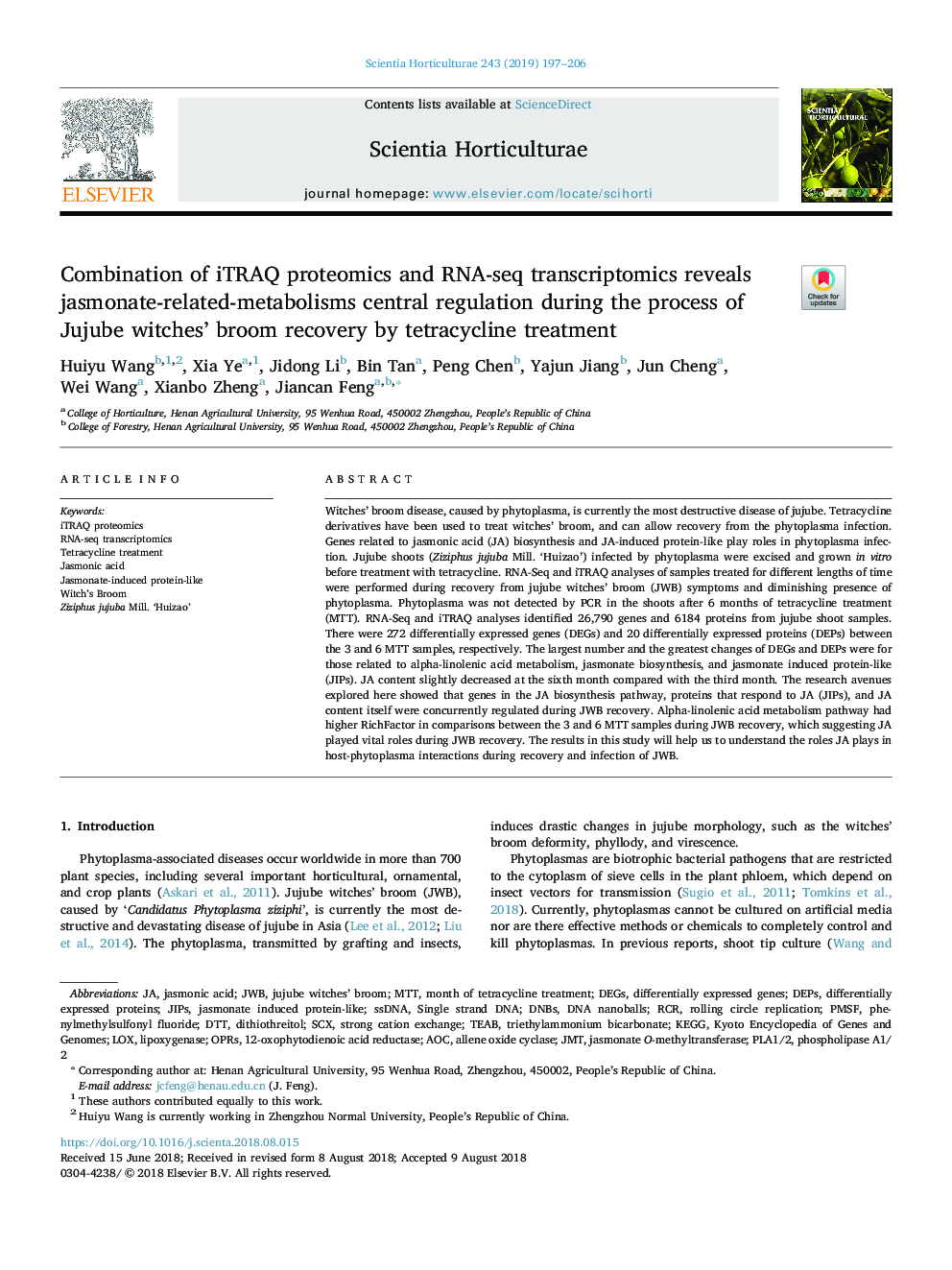| Article ID | Journal | Published Year | Pages | File Type |
|---|---|---|---|---|
| 9489577 | Scientia Horticulturae | 2019 | 10 Pages |
Abstract
Witches' broom disease, caused by phytoplasma, is currently the most destructive disease of jujube. Tetracycline derivatives have been used to treat witches' broom, and can allow recovery from the phytoplasma infection. Genes related to jasmonic acid (JA) biosynthesis and JA-induced protein-like play roles in phytoplasma infection. Jujube shoots (Ziziphus jujuba Mill. 'Huizao') infected by phytoplasma were excised and grown in vitro before treatment with tetracycline. RNA-Seq and iTRAQ analyses of samples treated for different lengths of time were performed during recovery from jujube witches' broom (JWB) symptoms and diminishing presence of phytoplasma. Phytoplasma was not detected by PCR in the shoots after 6 months of tetracycline treatment (MTT). RNA-Seq and iTRAQ analyses identified 26,790 genes and 6184 proteins from jujube shoot samples. There were 272 differentially expressed genes (DEGs) and 20 differentially expressed proteins (DEPs) between the 3 and 6 MTT samples, respectively. The largest number and the greatest changes of DEGs and DEPs were for those related to alpha-linolenic acid metabolism, jasmonate biosynthesis, and jasmonate induced protein-like (JIPs). JA content slightly decreased at the sixth month compared with the third month. The research avenues explored here showed that genes in the JA biosynthesis pathway, proteins that respond to JA (JIPs), and JA content itself were concurrently regulated during JWB recovery. Alpha-linolenic acid metabolism pathway had higher RichFactor in comparisons between the 3 and 6 MTT samples during JWB recovery, which suggesting JA played vital roles during JWB recovery. The results in this study will help us to understand the roles JA plays in host-phytoplasma interactions during recovery and infection of JWB.
Keywords
DTTKEGGDEPsAOCDNBSssDNARCRPMSFDEGsSingle strand DNAMTTallene oxide cyclasescxjasmonic acidLOXTEABtriethylammonium bicarbonatestrong cation exchangerolling circle replicationKyoto Encyclopedia of Genes and Genomesdithiothreitolphenylmethylsulfonyl fluoridelipoxygenaseDifferentially expressed proteinsDifferentially expressed genes
Related Topics
Life Sciences
Agricultural and Biological Sciences
Horticulture
Authors
Huiyu Wang, Xia Ye, Jidong Li, Bin Tan, Peng Chen, Yajun Jiang, Jun Cheng, Wei Wang, Xianbo Zheng, Jiancan Feng,
